Discover 11 hidden attractions, cool sights, and unusual things to do in Stratford-upon-Avon (United Kingdom). Don't miss out on these must-see attractions: Shakespeare's Birthplace, Anne Hathaway's Cottage, and Charlecote Park. Also, be sure to include Stratford-upon-Avon Town Hall in your itinerary.
Below, you can find the list of the most amazing places you should visit in Stratford-upon-Avon (England).
Table of Contents
Shakespeare's Birthplace
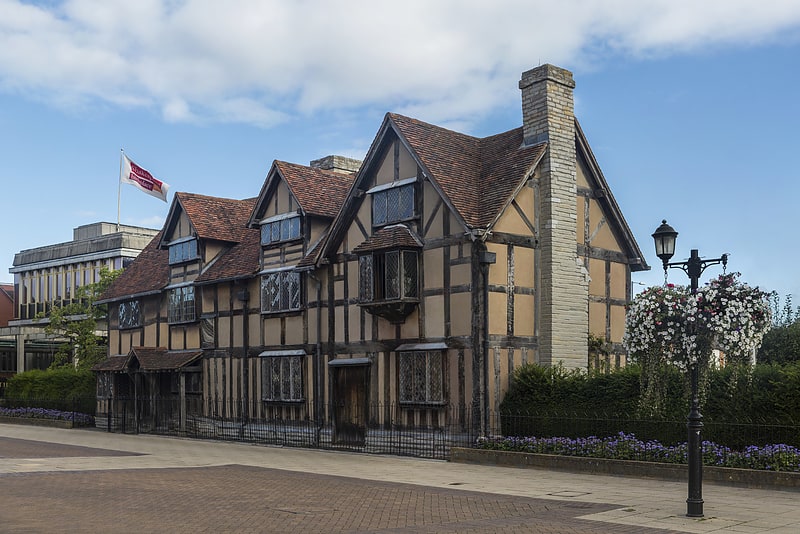
Writer's childhood home, with displays. Shakespeare's Birthplace is a restored 16th-century half-timbered house situated in Henley Street, Stratford-upon-Avon, Warwickshire, England, where it is believed that William Shakespeare was born in 1564 and spent his childhood years. It is now a small museum open to the public and a popular visitor attraction, owned and managed by the Shakespeare Birthplace Trust.[1]
Address: Henley St, CV37 6QW Stratford-upon-Avon
Anne Hathaway's Cottage

Former home of Shakepeare's wife. Anne Hathaway's Cottage is a twelve-roomed farmhouse where Anne Hathaway, the wife of William Shakespeare, lived as a child in the village of Shottery, Warwickshire, England, about 1 mile west of Stratford-upon-Avon. Spacious, and with several bedrooms, it is now set in extensive gardens.
The earliest part of the house was built prior to the 15th century; the higher part is 17th century. The house was known as Hewlands Farm in Shakespeare's day and had more than 90 acres (36 hectares) of land attached to it; to call it a cottage is arguably a misnomer, as it is much larger than the term usually implies. As in many houses of the period, it has multiple chimneys to spread the heat evenly throughout the house during winter. The largest chimney was used for cooking. It also has visible timber framing, typical of vernacular Tudor architecture.
After the death of Hathaway's father, the cottage was owned by her brother Bartholomew, and was passed down the Hathaway family until 1846, when financial problems forced them to sell it. However, it was still occupied by them as tenants when it was acquired in 1892 by the Shakespeare Birthplace Trust, which removed later additions and alterations. In 1969 the cottage was badly damaged in a fire, but was restored by the Trust. It is now open to the public as a museum.[2]
Address: Stratford-upon-Avon, Shottery, Warwickshire, England
Charlecote Park

Park in the Charlecote, England. Charlecote Park is a grand 16th-century country house, surrounded by its own deer park, on the banks of the River Avon in Charlecote near Wellesbourne, about 4 miles east of Stratford-upon-Avon and 5.5 miles south of Warwick, Warwickshire, England. It has been administered by the National Trust since 1946 and is open to the public. It is a Grade I listed building.[3]
Address: B4086, off A429, CV35 9ER Stratford-upon-Avon
Stratford-upon-Avon Town Hall
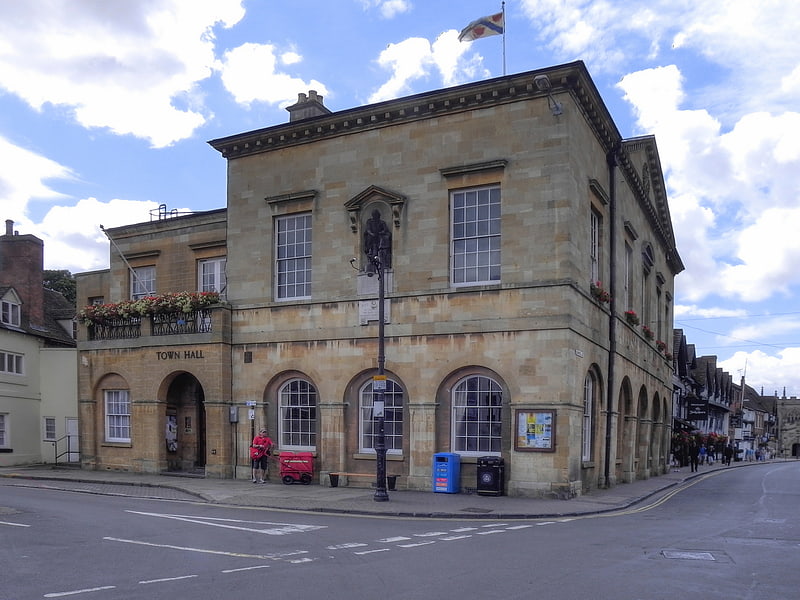
Stratford-upon-Avon Town Hall is a municipal building in Sheep Street, Stratford-upon-Avon, Warwickshire. It is a Grade II* listed building.[4]
Address: Sheep Street, Stratford-upon-Avon
Holy Trinity Church

Collegiate church in Stratford-upon-Avon, England. The Collegiate Church of the Holy and Undivided Trinity, Stratford-upon-Avon, is a Grade I listed parish church of the Church of England in Stratford-upon-Avon, Warwickshire, England. It is often known simply as Holy Trinity Church or as Shakespeare's Church, due to its fame as the place of baptism, marriage and burial of William Shakespeare. More than 200,000 tourists visit the church each year.[5]
Address: Old Town, CV37 6BG Stratford-upon-Avon
Stratford-upon-Avon Cricket Club Ground
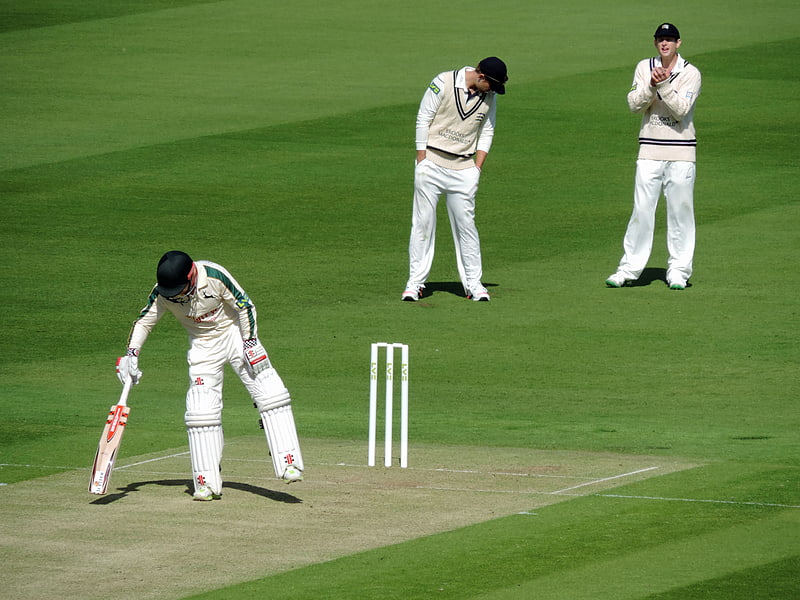
Cricket club in Stratford-upon-Avon, England. Stratford-upon-Avon Cricket Ground is a cricket ground in Stratford-upon-Avon, Warwickshire. The ground is next to the River Avon and also located next to the Royal Shakespeare Theatre, on Swans Nest Lane.
The first recorded match on the ground was in 1880, when Stratford-upon-Avon played a United South of England Eleven. Warwickshire first used the ground for first-class cricket in 1951 when they played Oxford University. First-class cricket next returned to the ground in 2004 when Warwickshire played Lancashire. The final first-class match held at the ground to date came in the Stratford Festival of Cricket in 2005, when Warwickshire played Hampshire; a Hampshire team which featured such names as Shane Warne and Kevin Pietersen.
The ground has also held 2 List-A matches. The first came in the 2000 NatWest Trophy when the Warwickshire Cricket Board played Kent. The second List-A match came in 2005 when Warwickshire played Scotland in the 2005 totesport League.
Additionally, the ground has hosted 3 Women's One Day Internationals. The first came in 2005 and saw England women play Australia women. The second came in 2007 and was between England women and New Zealand women. The final Women's ODI to date came in 2009 and was between England women and Australia women.
It also holds several high profile fixtures throughout the year including County Second XI Cricket, Summer Solstice Cricket and in June 2010 it hosted a match featuring the Lord's Taverners. In local domestic cricket, the ground is the home venue of Stratford-upon-Avon Cricket Club who used to play in the Birmingham and District Premier League Division One and now play in the Warwickshire League Premier Division.[6]
Address: Swans Nest Lane, CV37 7LS Stratford-upon-Avon
Shakespeare's Grave
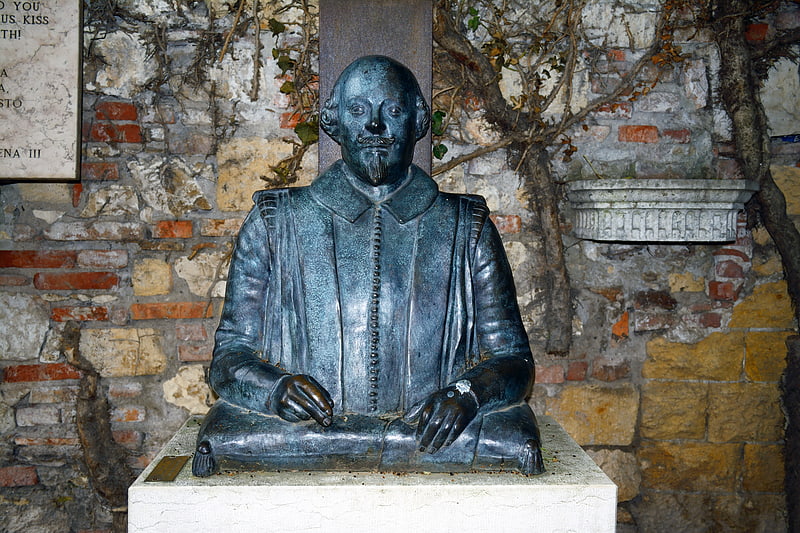
Church in Stratford-upon-Avon, England. The Shakespeare funerary monument is a memorial to William Shakespeare located inside Holy Trinity Church at Stratford-upon-Avon in Warwickshire, the church in which Shakespeare was baptised and where he was buried in the chancel two days after his death.
The monument, carved in pale blue limestone, is mounted on the north wall of the chancel. It has traditionally been identified as the work of the sculptor Gerard Johnson, but this attribution is challenged by Lena Cowen Orlin, who argues that it was more likely modelled from life by Gerard's brother, Nicholas Johnson. The monument features a demi-figure of the poet holding a (real) quill pen in one hand and a piece of paper resting on a cushion in the other. The style, which was popular from the early- to the mid-17th century, was most commonly used to memorialize divines, academics, and those professions with pretensions of learning. The buttoned doublet, with its ornamental slashes, was probably originally painted scarlet, the loose subfusc gown black, the eyes hazel, and the hair and beard auburn. It has been retouched many times, and was painted entirely white in 1793. This demi-figure is one of only two representations definitely accepted as accurately portraying William Shakespeare's physical appearance. The monument is topped with strapwork rising to a heraldic shield displaying Shakespeare's arms, on either side of which sits an allegorical figure: one, representing Labour, holds a spade, the other, representing Rest, holds an inverted torch and a skull.
The two columns that support the entablatures and coat-of-arms above the bust are of black polished marble. The two putti and the skull are of sandstone, and the capitals and bases of the columns are of gilded sandstone. The architraves, frieze and cornice were originally of red-veined white alabaster, but they were replaced in 1749 with white marble. The effigy and the cushion are carved of one piece of bluish Cotswold limestone, and the inlaid panels are of black touchstone.
The date the monument was erected is not known exactly, but it must have been before 1623; in that year, the First Folio of Shakespeare's works was published, prefaced by a poem by Leonard Digges that mentions "thy Stratford moniment". John Weever transcribed the monument inscription and grave epitaph, and H. R. Woudhuysen's analysis of the undated manuscript suggests that his visit to Stratford was made not much later than 1617–18. The monument was restored in 1748–49 and has been repainted several times.[7]
Address: 1 Old Town, CV37 6BG Stratford-upon-Avon
Stratford Butterfly Farm
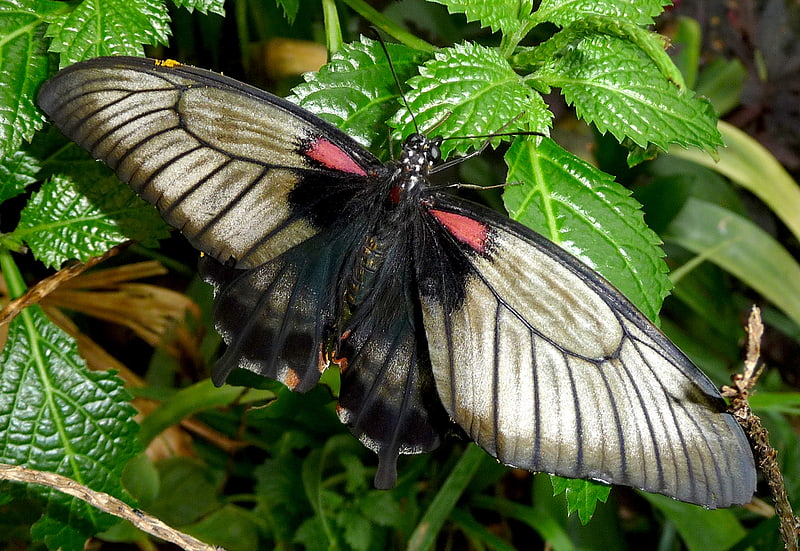
Tropical greenhouse full of butterflies. Stratford Butterfly Farm is a visitor attraction in Stratford-upon-Avon, Warwickshire, England. A leafy tropical environment is simulated inside large greenhouses. There are numerous free flying butterflies, a few free flying birds, a pool containing fish, and running water. There are also insects and spiders living in glass displays.[8]
Address: Butterfly Farm Swans Nest Lane, CV37 7LS Stratford-upon-Avon
The Guild Chapel of the Holy Cross
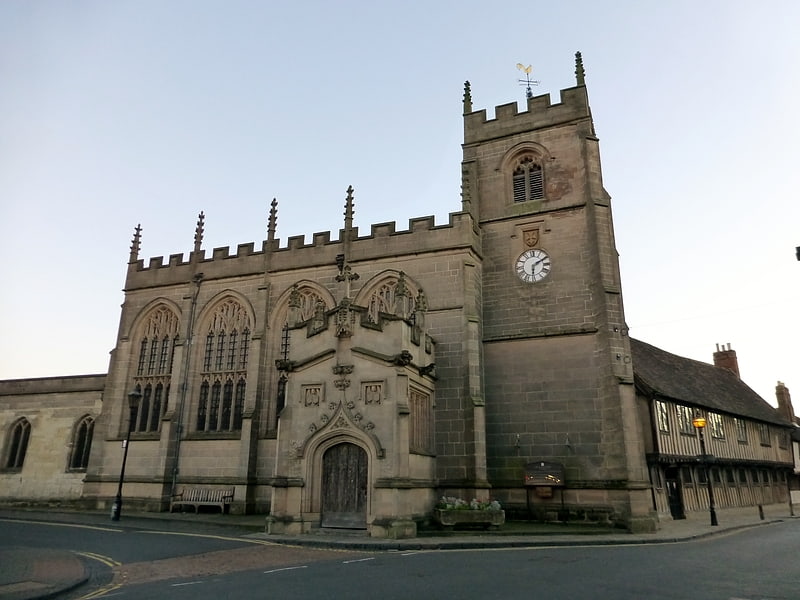
The Guild Chapel of the Holy Cross, Stratford-upon-Avon, Warwickshire is a chapel of 13th century origins. Founded by the Guild of the Holy Cross before 1269, it passed into the control of the town corporation in 1553, when the Guild was suppressed by Edward VI. The chapel stands on Church Street, opposite the site of William Shakespeare's home, New Place, and has historic connections to Shakespeare's family. The chapel was gifted an extensive series of wall-paintings by Hugh Clopton, an earlier owner of New Place, and John Shakespeare, Shakespeare's father, undertook their defacement in the later 1500s. The paintings have recently been conserved.
Clopton undertook a major expansion of the chapel before his death in 1496, constructing a new nave which was incomplete when he died. The chapel was restored in a thirty-year programme undertaken by Stephen Dykes Bower from 1954-1983 and is a Grade I listed building. Owned and maintained by the Stratford-upon-Avon Town Trust, the chapel is used for services by King Edward VI School.[9]
Address: The Chapel Chapel Lane, CV37 8TY Stratford-upon-Avon
New Place
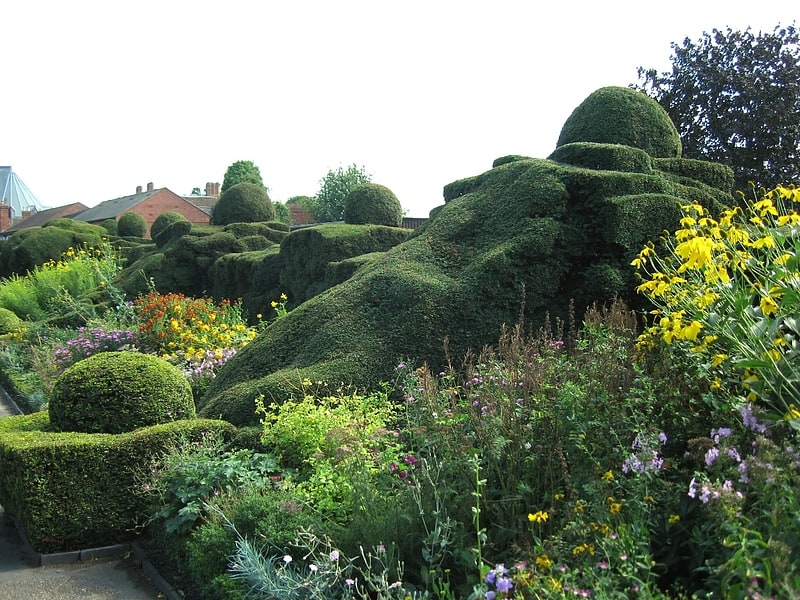
New Place was William Shakespeare's final place of residence in Stratford-upon-Avon. He died there in 1616. Though the house no longer exists, the site is owned by the Shakespeare Birthplace Trust, which maintains it as a specially-designed garden for tourists.[10]
Harvard House
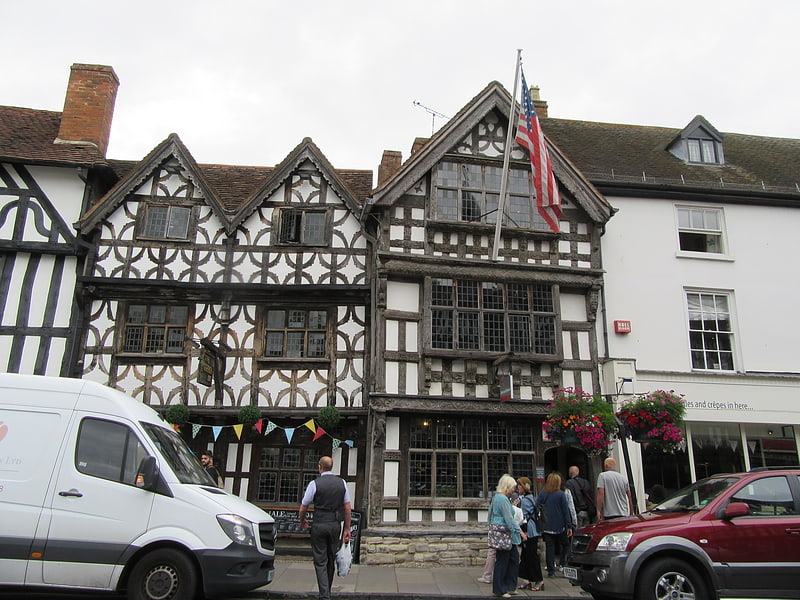
Non-profit organization in Stratford-upon-Avon, England. Harvard House stands at what is now 26 High Street, Stratford-upon-Avon, Warwickshire, England. Once known as the Ancient House, It was built in 1596 by Thomas Rogers, grandfather of the benefactor of Harvard University, John Harvard. The House has been cared for by the Shakespeare Birthplace Trust, on behalf of Harvard University, since 1990.
Thomas Rogers' initials and those of his second wife, Alice, are carved on the front of the house, together with the date 1596. These indicate it was a separate house, although Rogers also owned the adjoining property at what is now 27 and 28 High Street.
About 60 years old when the house was built, Rogers was a successful butcher and also a corn and cattle merchant. He served as Alderman for the Stratford Corporation alongside John Shakespeare, William's father.
When Thomas died in 1611 he left the house to his eldest surviving son from his second marriage, also named Thomas. This Thomas was a maltster; a person who produced malt, which was used in brewing beer. He died in 1639 and the property passed to his son, Edward Rogers, a bookbinder.
In the middle of the 1600s, Edward Rogers sold the house to John Capp, a blacksmith, whose family continued to run the business until about 1725. It was then let to a series of tenants; booksellers in the early 1730s and 1760s, a plumber during the years 1734–1747, and a succession of ironmongers from 1782 until 1801. Tailors Thomas and Harvey Williams were in occupation until 1871, when the premises became an estate agent's office.
In 1909, at the suggestion and enthusiastic support of the English novelist and Stratford-upon-Avon resident Marie Corelli, the house was purchased by the American millionaire Edward Morris of Chicago. After extensive restoration, it was given to Harvard University and became known as Harvard House.[11]
Address: Harvard House 26 High Street, CV37 6AU Stratford-upon-Avon